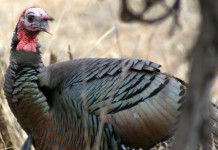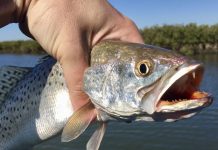Three Texas Parks and Wildlife Department employees died Saturday in a helicopter crash while conducting aerial surveys for desert bighorn sheep on the agency’s Black Gap Wildlife Management Area in Brewster County.
The men who perished in the accident were Wildlife Biologist Dewey Stockbridge, Fish and Wildlife Technician Brandon White and State Wildlife Veterinarian Dr. Bob Dittmar, the agency said in a statement. The pilot, a private contractor, survived and was transported to El Paso for further treatment.
“No words can begin to express the depth of sadness we feel for the loss of our colleagues in this tragic accident,” said Carter Smith, TPWD Executive Director, in the statement. “These men were consummate professionals, deeply liked and highly regarded by their peers and partners alike for the immense passion, dedication, and expertise they brought to their important work in wildlife management and veterinary medicine.
“Wildlife conservation in Texas lost three of its finest as they so honorably and dutifully carried out their calling to help survey, monitor and protect the bighorns of their beloved west Texas mountains. We will miss Dewey, Brandon, and Dr. Bob deeply and dearly. All of us at the Texas Parks and Wildlife Department send our deepest condolences and sympathies to the Stockbridge, White, and Dittmar families in the wake of this devastating tragedy and continue to pray for the health and recovery of the pilot.”
Texas Gov. Greg Abbott released the following statement about the helicopter crash:
“Our hearts ache today for those who died in this tragic accident. Cecilia and I are deeply saddened by this loss and we extend our sympathies to the families and loved ones of the victims. I ask all Texans to keep these families in their thoughts and prayers.”
The Texas Department of Public Safety, the Federal Aviation Administration and the Texas Game Wardens are currently investigating the incident. Further details will be shared with the public as they become available, TPWD officials said.
Black Gap WMA is home to groundbreaking research on the desert bighorn sheep. During the early years of the 20th Century, bighorns were hunted for their meat and to reduce the competition with domestic sheep, according to TPWD. It was soon observed that bighorn numbers were radically decreasing and in 1903 the state outlawed the hunting and killing of the bighorn. By 1941, the estimated numbers were approximately 150 for the entire state, according to TPWD records.
In the 1950s reintroduction efforts commenced with the trapping of sheep in other western states which were then brought to Black Gap. Later efforts also included the transplantation of bighorns from Elephant Mountain WMA. Today, the bighorn population is doing well, with animals expanding their range onto surrounding private tracts, as well as into Mexico and Big Bend National Park.
Bighorn restoration efforts in Texas have included a number of valuable partners and assisting agencies. According to the most recent estimates, all that work has paid off with a thriving population of about 1,500, compared with the figure that once was critically low.





















